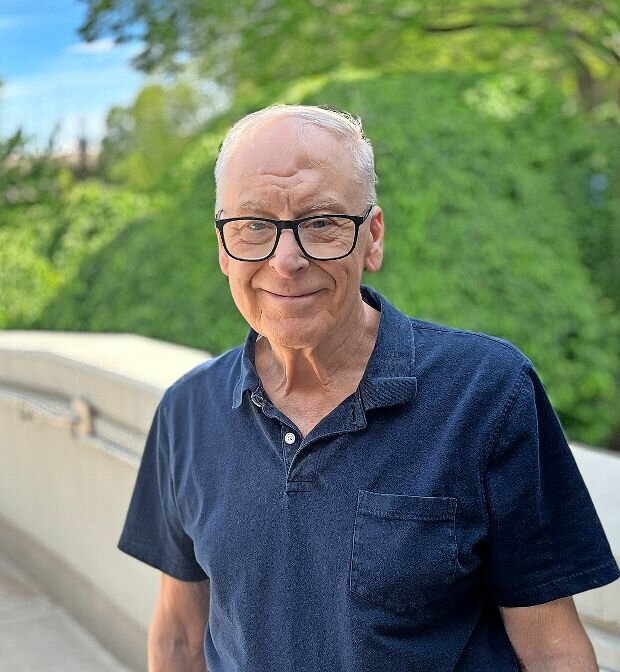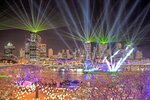For Lehman College professor Gerry Random numbers were never really all that random — until now
He devises a plan to use strong lasers to generate some useful randomness
A Lehman College professor has devised a method to generate truly random numbers. Many lay people may think why is that so important. Consider the use of lasers in our every day life. They are based on the use of random numbers.
Even NASA uses that technology to detect what kinds of chemicals are in rocks found on Mars. Also, a laser can cut through diamonds or thick metal.
Christopher Gerry, Lehman College and CUNY Graduate Center physicist, said his approach is entirely unbiased. It starts by counting photons on laser lights — a photon being a quantum of light which is also a basis by which our eyes function.
“For a sufficiently strong laser light, the probability of getting an even count or an odd count is identical to 50/50,” Gerry said.
“The traditional way of doing it has been with some kind of algorithm where your computer is number crunching, and you are getting numbers that are sort of random, at least they look random, but they are really not random,” Gerry said
A random number sounds like a magician’s game: “pick a number one through 10” or a simple game of heads or tails. But it’s not because it’s technically not an accurate generation.
Random number generation is useful for technology. It generates climate change prediction, gaming probability and encryption. Most random number generations rely on being unbiased.
To generate a perfect random number sequence you cannot flip a coin continuously. And until now, number generators also produced numbers with a computer algorithm.
But for the idea of random numbers — a coin toss resulting in “heads” is “zero” and tails, “one” repeating this can result in a “string” of zeros and ones. The pattern can be identical, and others can be binary digits.
“I was kicking this around for a long time,” Gerry said. He was working on the even or oddness of photon numbers for another purpose in quantum interferometry, which is used to measure the smallest variations on the surface of a microscopic organism to the structure of gas and dust in the universe.
He noted the “parity” of even and odd numbers counted. He found the probabilities to find the even and odd counts were the same at 50-50 as long as the laser light was sufficiently high.
But it doesn’t need to be extremely high either.
The traditional way of generating numbers is where a photon, one at a time, will fall onto a beam splitter — a partially silvered piece of glass that randomly transmits or reflects photons.
“If you have a laser beam shining on the thing — a strong laser beam, if it’s a 50-50 beam splitter, then half the intensity is transmitted through it, and half of it is reflected,” Gerry said.
Yet even as an untested theory, he knew it could come with some problems.
If the laser light is extremely intense, then nothing is quantum mechanical about it. And in the end, you can’t distinguish between the individual photons. It is either reflected or transmitted.
Gerry knew his method would work. Yet, there was no way for him to test it.
Richard Birrittella, Gerry’s former graduate student now at the U.S. Air Force research lab in Rome, New York, along with Paul Alsing, also at the research center, wrote an article describing his idea. It was published in 2021 in a physics archive called arXhiv for STEM research.
An experimental group led by Olivier Pfister from the University of Virginia noticed the article. Pfister’s graduate student Miller Easton was the one who contacted the Lehman professor about experimenting with using a photon detector in their lab.
“We knew that there were certain kinds of detectors where they can measure up to 12 photons and distinguish between seven, eight, and nine,” Gerry said. “These guys at the University of Virginia can count up to one hundred photons” with accuracy,
That was the world record at the time.
“The referees pointed out was about how secure a system like this would be,” Birrittella said. “And the answer is it would be super secure. Because it does not require anything more than a laser pointed into a detector.
“It’s more like there’s a sequence of tests, you could run the data through — you’re kind of building a case that your sequence is random. And there are certainly red flags if there are enough tests that your sequence fails,” he said. “This is kind of the basis of our analysis in the paper.
In a news release, Birrittella and Alsing used a series of randomness tests taken from the National Institute of Standards and Technology. Ultimately, this displayed no inherent bias in the measurements, confirming Gerry’s theory.
Last January, the university, the Rome Air Force lab, and Gerry gathered their reporting and documented it where the prestigious Journal Nature Photonics published it.
It was a stroke of chance that the number generator theory would catch the eyes of any laboratory. It served to demonstrate the capabilities of a new technology.









